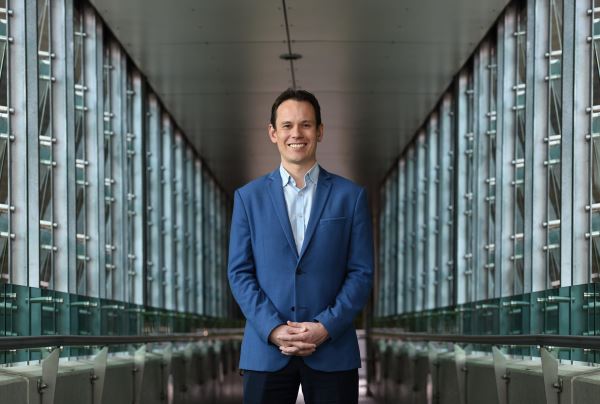A QUT engineer at the cutting edge of the development of autonomous vehicles and robotics has been recognised with a top award by the 2019 Australian Academy of Technology.
Professor Michael Milford was presented with the prestigious Engineering Batterham Medal at a gala event in Sydney last week.
He received the award in recognition of his work over the past five years.
Professor Milford conducts interdisciplinary research at the boundary between robotics, neuroscience and computer vision at the Australian Centre for Robotic Vision at QUT in Brisbane.
His latest project involves the Queensland Department of Transport and Main Roads (TMR) and the iMOVE Co-operative Research Centre (iMOVE CRC), taking an artificial intelligence system on a 1200km road trip of south-east Queensland.
New research into autonomous mining vehicles
“The big problem that faces autonomous vehicles right now is that at the moment they don’t drive as well as humans in all possible conditions,” Professor Milford said.
“We’re targeting how the car might use infrastructure, such as lane markings and street signage, to help it to drive well.”
Professor Milford is also leading research on new positioning systems for autonomous mining vehicles, working with Fortune 100 company Caterpillar, Mining3 and the Queensland Government.
The Batterham Medal was established in 2014 to be presented annually to a graduate engineer who has achieved substantial recognition for their work in the past five years.
“The nation’s future prosperity depends on embracing new technology to address critical national challenges,” said Academy President Professor Hugh Bradlow.
“More than ever, we need knowledge creation, technology and innovation that can be harnessed to drive commercialisation and economic and social benefit.
“Professor Milford has made a tremendous contribution – translating abstract neuroscience concepts into rugged technology that can be trialled for real-world applications.”
Significant collaboration with industry and universities
Professor Milford’s research looks at how the brain handles navigation and perception to see how they can be applied to challenging tasks such as all-weather, anytime positioning for autonomous vehicles.
His group’s research has involved significant collaboration with industry and universities around the world, including Harvard and Oxford universities, Google Deepmind, Caterpillar, the US Air Force and NASA’s Jet Propulsion Laboratory, among others.
“I’m proud that our team’s work has been recognised by this Learned Academy,” Professor Milford said.


